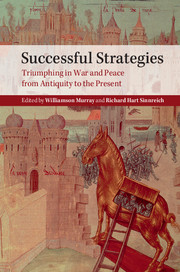Book contents
- Frontmatter
- Dedication
- Contents
- List of tables and map
- List of contributors
- Acknowledgments
- Introduction
- 1 The strategic thought of Themistocles
- 2 The grand strategy of the Roman Empire
- 3 Giraldus Cambrensis, Edward I, and the conquest of Wales
- 4 Creating the British way of war: English strategy in the War of the Spanish Succession
- 5 Failed, broken, or galvanized?
- 6 Victory by trial and error: Britain’s struggle against Napoleon
- 7 The strategy of Lincoln and Grant
- 8 Bismarckian strategic policy, 1871–1890
- 9 Dowding and the British strategy of air defense 1936–1940
- 10 US naval strategy and Japan
- 11 US grand strategy in the Second World War
- 12 American grand strategy and the unfolding of the Cold War 1945–1961
- 13 The Reagan administration’s strategy toward the Soviet Union
- Afterword
- Index
- References
3 - Giraldus Cambrensis, Edward I, and the conquest of Wales
Published online by Cambridge University Press: 05 June 2014
- Frontmatter
- Dedication
- Contents
- List of tables and map
- List of contributors
- Acknowledgments
- Introduction
- 1 The strategic thought of Themistocles
- 2 The grand strategy of the Roman Empire
- 3 Giraldus Cambrensis, Edward I, and the conquest of Wales
- 4 Creating the British way of war: English strategy in the War of the Spanish Succession
- 5 Failed, broken, or galvanized?
- 6 Victory by trial and error: Britain’s struggle against Napoleon
- 7 The strategy of Lincoln and Grant
- 8 Bismarckian strategic policy, 1871–1890
- 9 Dowding and the British strategy of air defense 1936–1940
- 10 US naval strategy and Japan
- 11 US grand strategy in the Second World War
- 12 American grand strategy and the unfolding of the Cold War 1945–1961
- 13 The Reagan administration’s strategy toward the Soviet Union
- Afterword
- Index
- References
Summary
In 1063, Harold Godwineson, heir to the English throne, launched a major invasion of Wales. His forces spread fire and slaughter through the rough Welsh terrain, killing so many men, Gerald of Wales tells us, that he “left not one that pisseth against a wall.” Such large-scale campaigns of devastation were typical of medieval warfare, and the result was also typical, at least for the early and high Middle Ages: the numerous Welsh “princes,” who independently governed their own mini-states, “submitted” to the English and acknowledged their over-lordship in a loose way. Harold and his men then went home with their booty (mostly cattle, no doubt), confident they had both weakened the Welsh and taught them a lesson, so that they would make little trouble for years to come. Harold did not, so far as our limited sources indicate, annex any territory, or depose and replace any Welsh ruler, or hold and garrison outposts within Wales.
Having succeeded by the standards of the day, Harold found himself on the defensive in England three years later against two foreign attackers, first Norway’s Harald Hardrada, then William of Normandy. Against the Norwegians, who fought in the same style as the English, he won a decisive battle, but the Normans defeated him at Hastings. The result was the Norman Conquest of England, an extremely thorough occupation and domination vastly different from the loose subordination Harold had imposed on Wales. A French-speaking aristocracy of knights, barons, and counts supplanted the thegns and ealdormen who had been the principal landholders and political elite of the Anglo-Saxon realm. French replaced English as the language of the royal court and of law-courts, and as the second language (after Latin) for writing history or literary works. Although William retained some elements of the old system, broad aspects of Norman military and political organization arrived with the conquerors. For more than two centuries, the dominant form of Anglo-Norman armies was the armored cavalry rather than heavy infantry.
- Type
- Chapter
- Information
- Successful StrategiesTriumphing in War and Peace from Antiquity to the Present, pp. 65 - 99Publisher: Cambridge University PressPrint publication year: 2014
References
- 1
- Cited by



